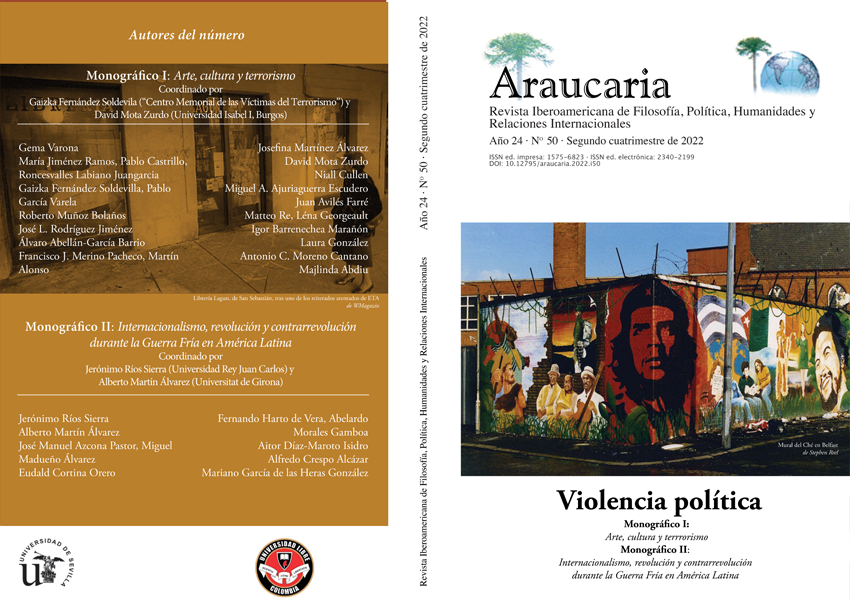Urbanismo y revolución. Pintadas, murales y carteles de ETA (1969-2011)
DOI:
https://doi.org/10.12795/araucaria.2022.i50.11Keywords:
Urbanismo, Terrorismo, País Vasco, Espacio público, Arte urbanoAbstract
Throughout history, the public space in different towns and cities has been characterized by welcoming and favoring social and cultural encounters and exchanges. In turn, these urban fabrics have served to promote revolutions, changes, and social improvements. In the west countries case, the urban revolution has turned into a territorial expansion of democracy. Thus, structural social changes demanded by society have started from the squares and streets of numerous cities. Changes, which in many cases have been a real change. But what happens when the vindication, fight or even revolution started from squares and streets serves to reverse all the democratic advances achieved This article analyzes the social demand phenomenon for independence in the Basque urban environments during the years 1969-2011. To do this, the methodology used is based on the academic and field review, characterizing the actions of independence and terrorism from an urban context through graffiti, murals, posters, and demonstrations. Thus, the neutrality of the public space progressively has been diminishing in the Basque urban environment until appropriating it. These aspects began to take relevance at the beginning of democracy.
Downloads
References
“JARRAI-HAIKA-SEGI constituye una organización estable en el tiempo, desenvolviéndose desde 1978 a 2001; que, lejos de dedicarse a la defensa pacífica y por medios legítimos de su opción política, dicha organización complementa la actividad de lucha armada de ETA, mediante actos de kale borroka numerosos y reiterados […] Y que su actividad es diseñada, coordinada, graduada y controlada por ETA”.
Sentencia del Tribunal Supremo STS 19-1-2007 (Rc 1841/05)
Downloads
Published
How to Cite
Issue
Section
License
Las ediciones impresa y electrónica de esta Revista son editadas por el Secretariado de Publicaciones de la Universidad de Sevilla, siendo necesario citar la procedencia en cualquier reproducción parcial o total.Salvo indicación contraria, todos los contenidos de la edición electrónica se distribuyen bajo una licencia de uso y distribución “Creative Commons Atribución-NoComercial-SinDerivar 4.0 Internacional”








